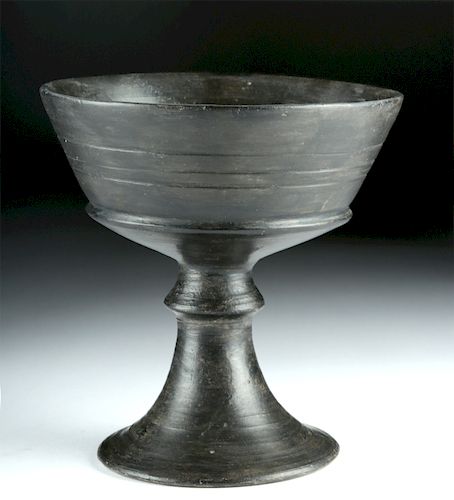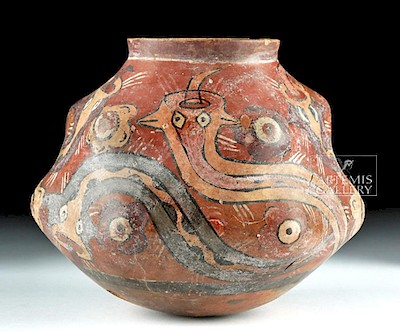Impressive Etruscan Bucchero Chalice
Lot 38c
About Seller
Artemis Gallery
686 S Taylor Ave, Ste 106
Louisville, CO 80027
United States
Selling antiquities, ancient and ethnographic art online since 1993, Artemis Gallery specializes in Classical Antiquities (Egyptian, Greek, Roman, Near Eastern), Asian, Pre-Columbian, African / Tribal / Oceanographic art. Our extensive inventory includes pottery, stone, metal, wood, glass and textil...Read more
Categories
Estimate:
$600 - $900
Absentee vs Live bid
Two ways to bid:
- Leave a max absentee bid and the platform will bid on your behalf up to your maximum bid during the live auction.
- Bid live during the auction and your bids will be submitted real-time to the auctioneer.
Bid Increments
| Price | Bid Increment |
|---|---|
| $0 | $25 |
| $300 | $50 |
| $1,000 | $100 |
| $2,000 | $250 |
| $5,000 | $500 |
| $10,000 | $1,000 |
| $20,000 | $2,500 |
| $50,000 | $5,000 |
| $100,000 | $10,000 |
| $200,000 | $20,000 |
About Auction
By Artemis Gallery
Jul 5, 2018
Set Reminder
2018-07-05 10:00:00
2018-07-05 10:00:00
America/New_York
Bidsquare
Bidsquare : Ancient | Ethnographic | Fine Art
https://www.bidsquare.com/auctions/artemis-gallery/ancient-ethnographic-fine-art-3306
Featuring classical antiquities, ancient and ethnographic art from cultures encompassing the globe. Artemis Gallery info@artemisgallery.com
Featuring classical antiquities, ancient and ethnographic art from cultures encompassing the globe. Artemis Gallery info@artemisgallery.com
- Lot Description
Classical World, Etruria, ca. early 6th century BCE. An elegant chalice with a slightly concave bowl and flaring, trumpet-shaped foot with a short, hollow stem. In the interior of the bowl there is a deep groove separating the wide rim from the floor of the bowl. The vase is a lustrous black with a flanged base and three incised grooves around the center of its body. Chalices like this one were wheel-made, with a foot that was thrown separately on the wheel and joined to the rest of the vase as the two pieces began to harden. It was then burnished with a slip and fired in a reducing atmosphere to produce this glossy black color, which is characteristic of the famous Bucchero technique. Size: 6.1" W x 6.45" H (15.5 cm x 16.4 cm)
This type of chalice was common during this period, and seems to have been inspired by Assyrian chalices imported from the Near East a century earlier. This chalice almost certainly came from a funerary context, placed in an opulent Etruscan tomb as an offering. However, it was probably placed there because similar - or maybe even the same - vessels were used in life by the people of Etruria; items placed in the tomb were meant to be a link between the world of the living and the dead, and to help furnish a symbolic domestic space for the deceased. Therefore, it seems likely that chalices like this one were also used in everyday life for drinking wine or other beverages.
Provenance: private East Coast, USA collection
All items legal to buy/sell under U.S. Statute covering cultural patrimony Code 2600, CHAPTER 14, and are guaranteed to be as described or your money back.
A Certificate of Authenticity will accompany all winning bids.
We ship worldwide and handle all shipping in-house for your convenience.
#136239Repaired from multiple pieces, with thin lines of overpaint along the repairs. Repairs are well done and unobtrusive. Light encrustation in some places, mainly on the interior.Condition
- Shipping Info
-
All shipping is handled in-house for your convenience. Your invoice from Artemis Gallery will include shipping calculation instructions. If in doubt, please inquire BEFORE bidding for estimated shipping costs for individual items.
-
- Buyer's Premium



 EUR
EUR CAD
CAD AUD
AUD GBP
GBP MXN
MXN HKD
HKD CNY
CNY MYR
MYR SEK
SEK SGD
SGD CHF
CHF THB
THB















